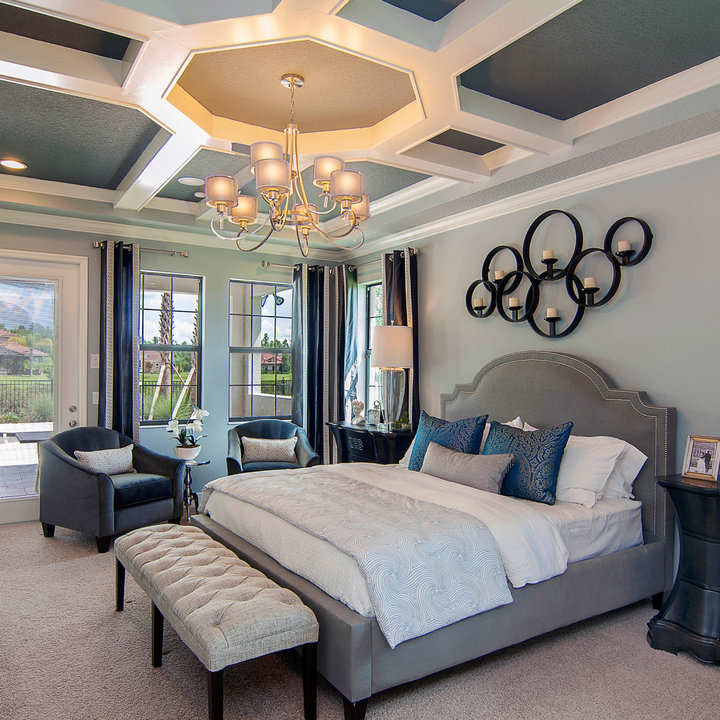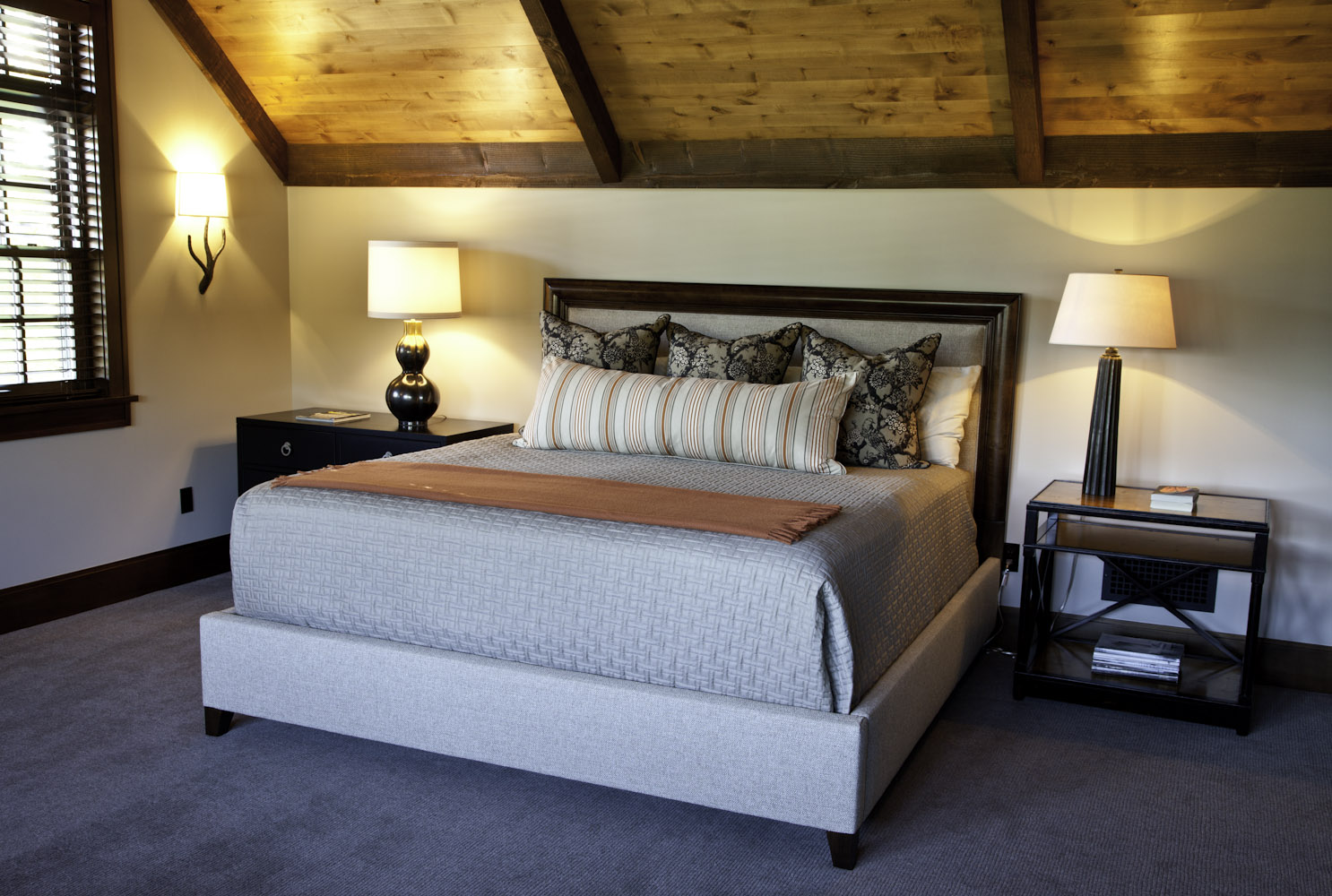Enhancing Functionality and Space

A bedroom bump out offers a fantastic opportunity to enhance the functionality and space of your bedroom, creating a more versatile and enjoyable living environment. This addition can transform your bedroom into a haven of comfort and practicality, providing valuable extra square footage that can be tailored to your specific needs.
Maximizing Space and Functionality
The additional square footage provided by a bedroom bump out opens up a world of possibilities for creating a truly functional and stylish space. This extra space can be utilized to create a dedicated workspace, a cozy reading nook, or even a walk-in closet, depending on your individual preferences and the size of the bump out.
Examples of Bump Out Uses
- A bump out can be transformed into a dedicated workspace, complete with a built-in desk, ample storage, and natural light. This provides a quiet and productive environment for working from home or pursuing hobbies.
- A bump out can be converted into a luxurious ensuite bathroom, adding a touch of opulence and convenience to your bedroom. This allows for a private and relaxing space to unwind and pamper yourself.
- A bump out can be designed as a cozy seating area, perfect for reading, relaxing, or enjoying a cup of coffee. This can be achieved by incorporating comfortable seating, soft lighting, and a small coffee table.
Designing a Functional Floor Plan
When designing the layout of your bedroom bump out, it’s crucial to consider its size and location. A well-designed floor plan ensures that the space is maximized and utilized effectively.
Examples of Floor Plan Ideas
- For a smaller bump out, a built-in desk with a window seat can be a perfect solution. This maximizes space and provides a comfortable and functional workspace.
- A larger bump out can accommodate a custom bookshelf, providing ample storage for books, decor, and other items. This creates a stylish and functional reading nook.
- A bump out located next to the bedroom can be used to create a walk-in closet. This provides a spacious and organized area for storing your clothing and accessories.
Aesthetic and Design Considerations: Bedroom Bump Out Ideas

A bedroom bump out presents a fantastic opportunity to enhance not only the functionality but also the aesthetic appeal of your space. By thoughtfully considering architectural styles, material choices, and window/door selections, you can create a bump out that seamlessly integrates with your existing bedroom design while adding a touch of visual delight.
Architectural Styles
The architectural style you choose for your bump out will significantly impact its overall look and feel.
- A contemporary bump out might feature clean lines, minimalist detailing, and large windows to maximize natural light. This style is often characterized by the use of modern materials like steel, glass, and concrete.
- A traditional bump out, on the other hand, might incorporate more ornate details, such as crown molding, wainscoting, and arched windows. This style often uses materials like wood, stone, and brick.
- A modern farmhouse bump out might blend rustic elements with contemporary touches. This style typically features exposed beams, reclaimed wood, and large windows, creating a warm and inviting atmosphere.
Seamless Integration
The key to a successful bump out is seamless integration with the existing bedroom design.
- Matching materials: Consider using the same materials for the bump out as the rest of the bedroom, such as hardwood flooring, painted walls, or wallpaper. This will create a sense of continuity and flow.
- Harmonizing colors: Choose colors for the bump out that complement the existing color scheme of the bedroom. You can use the same color palette but with slightly different shades or accents.
- Blending textures: Mix and match textures to create visual interest and depth. For example, you could use a smooth, painted wall in the bedroom and add a textured accent wall in the bump out.
Window and Door Selection
Windows and doors play a crucial role in maximizing natural light and creating a visual connection to the outdoors.
- Maximize natural light: Choose windows that are large enough to allow plenty of natural light to flood the bump out. Consider using multiple windows or a large bay window to maximize light intake.
- Create a visual connection: Select windows and doors that offer a view of the outdoors, whether it’s a garden, a patio, or simply the street. This will help to bring the outdoors in and create a more inviting space.
- Consider style and function: The style of your windows and doors should complement the overall architectural style of the bump out. Consider using French doors to create a seamless transition to a patio or deck.
Unique Architectural Features
- Bay window: A bay window adds a touch of elegance and creates a cozy seating area within the bump out. Bay windows also maximize natural light and offer stunning views.
- Curved wall: A curved wall can create a sense of movement and flow within the bump out. It also adds a unique architectural element that will make the space stand out.
- Vaulted ceiling: A vaulted ceiling creates a sense of spaciousness and grandeur. It also allows for the installation of a skylight, which will further enhance natural light.
Practical Considerations and Implementation

Before embarking on your bedroom bump out project, it’s crucial to address the practical considerations that will ensure a successful and structurally sound addition to your home. This section delves into the essential aspects of foundation, framing, roofing, permitting, cost, and energy efficiency.
Foundation Requirements
The foundation is the bedrock of your bump out, providing structural support and stability. The type of foundation required will depend on factors such as the soil conditions, the size of the bump out, and local building codes. Common foundation options include:
- Slab foundation: A concrete slab poured directly on the ground, suitable for smaller bump outs. This is often the most cost-effective option.
- Crawl space foundation: A foundation with a small crawl space below the floor, allowing for easier access to utilities and plumbing.
- Basement foundation: A fully enclosed basement foundation, providing additional living space or storage.
Consulting with a structural engineer is vital to determine the most appropriate foundation type for your specific project.
Framing Techniques
The framing of your bump out provides the skeleton that supports the walls, roof, and other components. Common framing techniques include:
- Wood framing: Traditional and widely used, wood framing offers flexibility and ease of construction. However, it requires careful treatment to prevent moisture damage.
- Steel framing: A durable and fire-resistant option, steel framing is often used for larger projects or areas with higher seismic activity.
The choice of framing technique will depend on factors such as the size and design of the bump out, as well as your budget and local building codes.
Roofing Considerations
The roof of your bump out should seamlessly integrate with the existing roofline and provide adequate weather protection. Consider factors such as:
- Roof pitch: The slope of the roof, determined by local building codes and aesthetic considerations.
- Roofing materials: Options include asphalt shingles, metal roofing, tile, and slate, each with its own advantages and disadvantages.
- Drainage: Ensuring proper drainage to prevent water damage is crucial, often achieved through gutters and downspouts.
Working with a qualified roofing contractor is essential to ensure a safe and effective roof installation.
Permitting Process, Bedroom bump out ideas
Obtaining the necessary permits is a crucial step in the bedroom bump out process. The specific permits required will vary depending on your location and the scope of the project. It’s important to:
- Research local building codes: Familiarize yourself with the regulations governing construction in your area.
- Submit plans and specifications: Provide detailed drawings and specifications to the local building department.
- Obtain necessary inspections: Allow for inspections at various stages of construction to ensure compliance with codes.
The permitting process can take time, so it’s best to start early to avoid delays.
Cost Factors
The cost of a bedroom bump out project can vary significantly depending on factors such as:
- Size and complexity of the bump out: Larger and more complex projects will naturally be more expensive.
- Materials used: High-quality materials will increase costs, but may offer long-term benefits.
- Labor costs: Skilled labor can be expensive, particularly in areas with high demand.
- Permits and inspections: Permitting fees and inspection costs can add to the overall budget.
It’s essential to obtain accurate quotes from contractors and factor in all costs before committing to the project.
Energy Efficiency
Maximizing energy efficiency in your bedroom bump out is important for both environmental and financial reasons. Here are some tips:
- Insulation: Properly insulating the walls, ceiling, and floor of the bump out will significantly reduce heat loss and gain.
- High-performance windows: Double- or triple-paned windows with low-e coatings can improve energy efficiency by reducing heat transfer.
- Energy-efficient appliances: Choosing energy-efficient appliances, such as heating and cooling systems, can reduce energy consumption.
Investing in energy-efficient features can lead to long-term savings on energy bills and contribute to a more sustainable home.
Step-by-Step Guide for Building a Bedroom Bump Out
Here’s a step-by-step guide to building a bedroom bump out:
- Planning and Design:
- Determine the size and layout of the bump out.
- Create detailed plans and specifications.
- Obtain necessary permits and approvals.
- Foundation:
- Excavate the site and prepare the foundation area.
- Pour the foundation according to approved plans.
- Allow sufficient time for the foundation to cure.
- Framing:
- Erect the walls and roof framing using appropriate materials.
- Install windows and doors.
- Sheath the exterior walls and roof.
- Roofing:
- Install the roofing system, including underlayment, shingles, and flashing.
- Ensure proper drainage and ventilation.
- Insulation and Siding:
- Insulate the walls, ceiling, and floor to improve energy efficiency.
- Install exterior siding and trim.
- Interior Finishes:
- Install drywall, paint, and flooring.
- Complete electrical and plumbing work.
- Install fixtures and appliances.
- Final Touches:
- Clean up the construction site.
- Perform final inspections.
- Enjoy your new bedroom bump out!